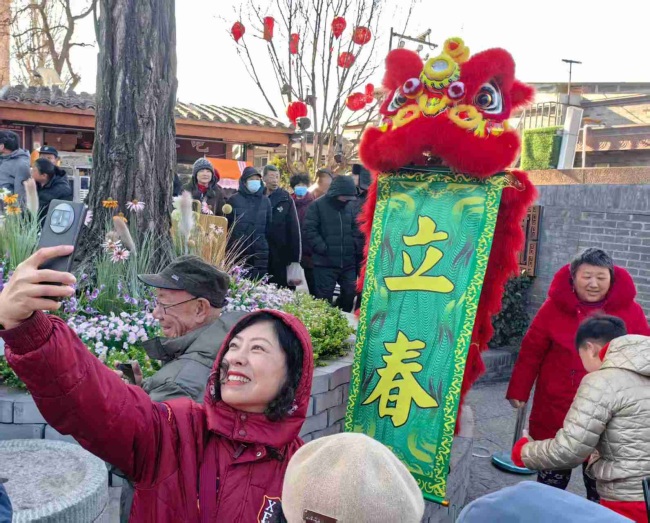CCTV News: The Spring Festival will usher in at 10:10 pm on February 3. The Beginning of Spring is the first solar term of the twenty-four solar terms. "Stand up" represents the beginning, the four seasons restart, and the warmth is full of warmth. "Spring" is hope, plants and trees sprout back, and all things sing together. The plan for the year lies in spring. On the day of the beginning of spring, the temperature gradually warms up, and the earth begins to show vitality.
Folk customs experts introduced that the beginning of spring is on the last day of the "Five Ninth Festival" and the beginning of spring is called "Spring is hit by the 59th Festival"; the beginning of spring is on the first day of the "Spring is hit by the 69th Festival". February 3 is the last day of the "59th" among the "Nine Numbers", which belongs to "Spring Fifty-Nine Tails". The word "touch" depicts spring more vividly.
The Beginning of Spring is commonly known as "Keep Spring" in many parts of our country. When the Spring Festival comes into contact with the Spring Festival, people "fight the Spring" and express joy and joy, auspiciousness and blessings. Next, we will go to various places to experience the strong New Year atmosphere.
Folk culture celebrates the New Year and celebrates the New Year happily
At the Hushan Market "Shistoric City, Reunion Year" held in Changshu, Jiangsu, there are a wide range of traditional food and cultural and creative products. Dozens of folk performances every day will take everyone to immerse themselves in the fun New Year atmosphere. In addition to Hushan Market, the water New Year's Market in Shajiabang Scenic Area in Changshu allows tourists to feel the strong New Year's customs culture of Jiangnan water towns. The ancient landscape city and the fiery Spring Festival collided with different sparks.
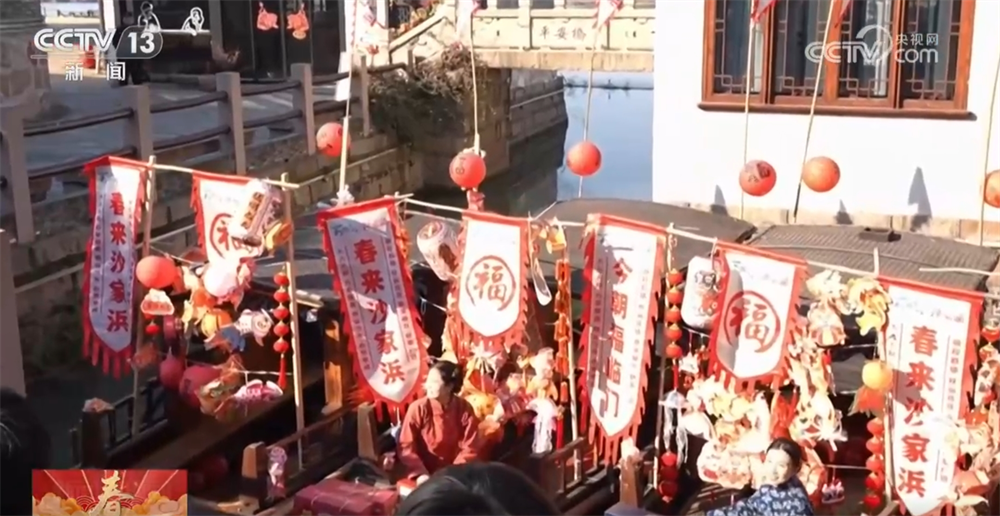
Intangible cultural heritage activities are held in many places in Chongqing, and tourists feel the charm of traditional culture in the strong festive atmosphere. In Jindaoxia, located in Beibei, Chongqing, the scenic area has carefully planned a number of interactive activities with the theme of "Taste of Traditional Folk Intangible Cultural Heritage" to lead tourists to participate in intangible cultural heritage experiences such as throwing pots, cutting paper, and making glutinous rice cakes; Chongqing Sichuan Opera Art Center Grand Theater also launched the classic drama "Jinshan Temple" to welcome the Spring Festival of the Year of the Snake, bringing everyone a Spring Festival holiday full of cultural charm.
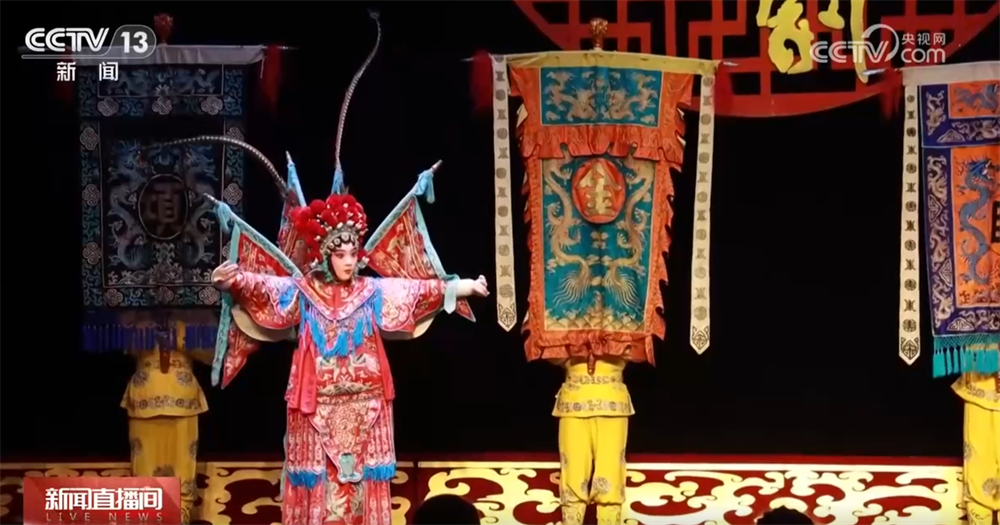
Huangyao Ancient Town, Zhaoping County, Hezhou City, Guangxi held the annual "Dance of Fish and Dragons" intangible cultural heritage event. Local residents formed a parade and performance team. They either held up fish and dragon lanterns high or carried floats, and shuttled through the ancient streets and alleys, praying for good weather and peace of the country and the people. This event also specially made a zodiac snake lantern.
Jiangxi: Folk parades are making the New Year, and the performance of the ancient village wins cheers
The past two days, there are also folk parades in Shangrao and Ji'an, Jiangxi, which are also festive and lively.
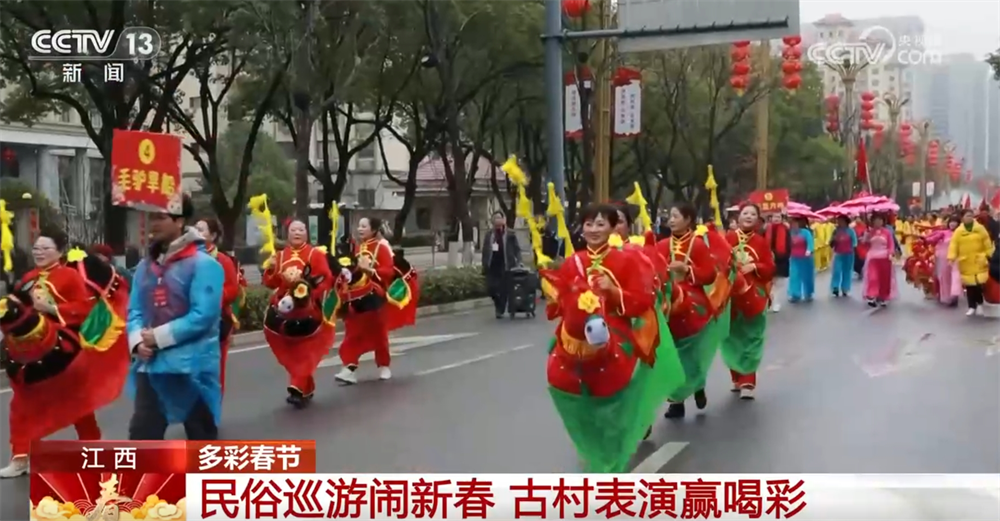
In Yiyang County, Shangrao City, the long cruise ship attracted many citizens and tourists to walk on the streets, as well as square formations such as clam shell lamps, flower baskets, waist drums, rice cakes, etc., performing while walking, while saluting to the people watching on the roadside.

In Diaoyuan Ancient Village in Jizhou District, Ji'an City, various performances such as shadow puppetry, english songs and dances, storytelling were wonderful, winning the audience's applause.
Ningbo, Zhejiang: Homestays are focusing on "intangible cultural heritage characteristics" and welcome the new experience of traditional culture
Nowadays, various traditional cultures and folk activities are becoming more and more popular. Not only can you see these traditional folk performances in various scenic spots and markets, this year's Spring Festival, some B&Bs in Ningbo, Zhejiang also featured intangible cultural heritage experience projects as their main feature, so that tourists can also experience intangible cultural heritage culture while staying in.
In Jiulonghu Town, Zhenhai District, Ningbo, dozens of B&Bs of various colors have gathered. In view of this feature, the local area has created a "craftsman gathering area" and invited representative inheritors of intangible cultural heritage to settle in to create an experience workshop.
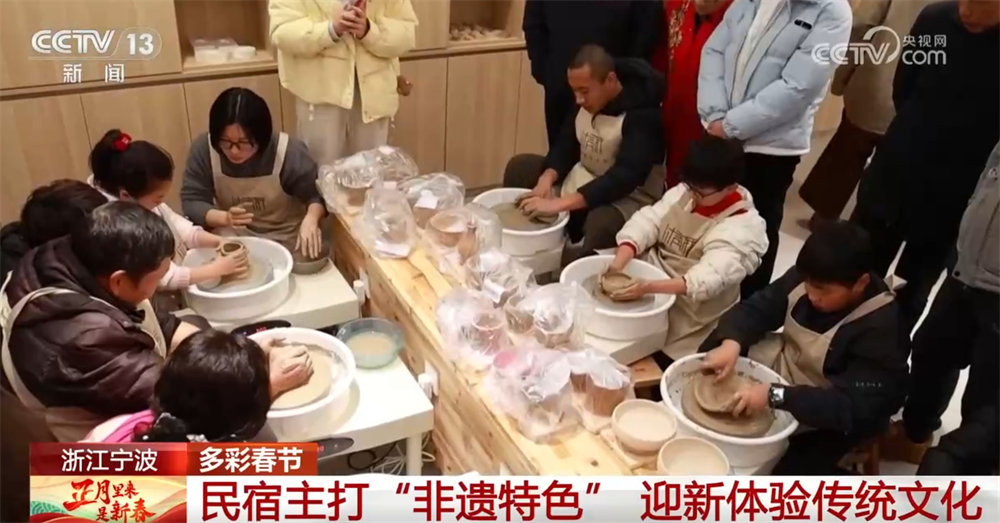
The Yue Kiln celadon firing technique is a national intangible cultural heritage. During the Spring Festival, many tourists come here to experience it every day.
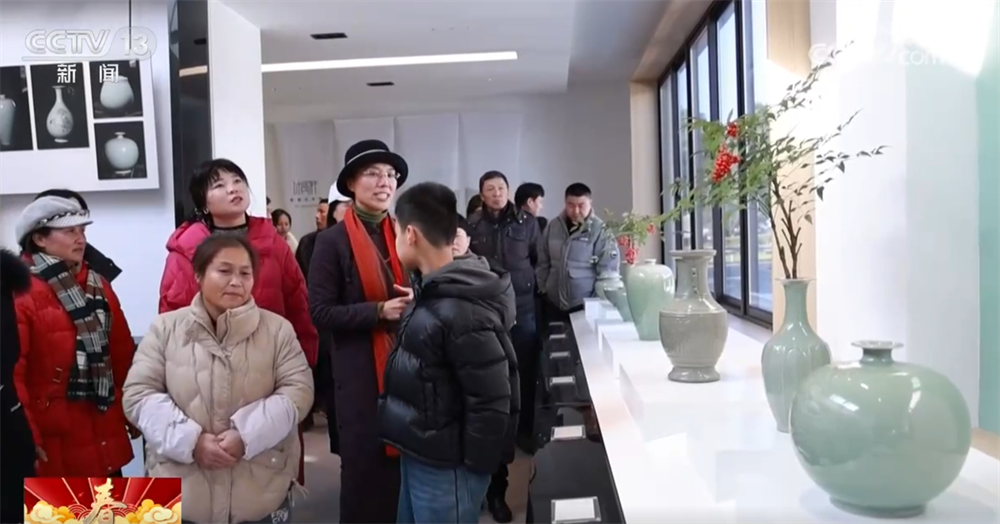
Statistics show that from New Year's Eve to the fifth day of the Chinese New Year, the scenic spots in Jiulonghu Town received a total of 195,000 tourists, an increase of 14.5% year-on-year, of which 12,000 tourists were visited by B&Bs and Hotels.


